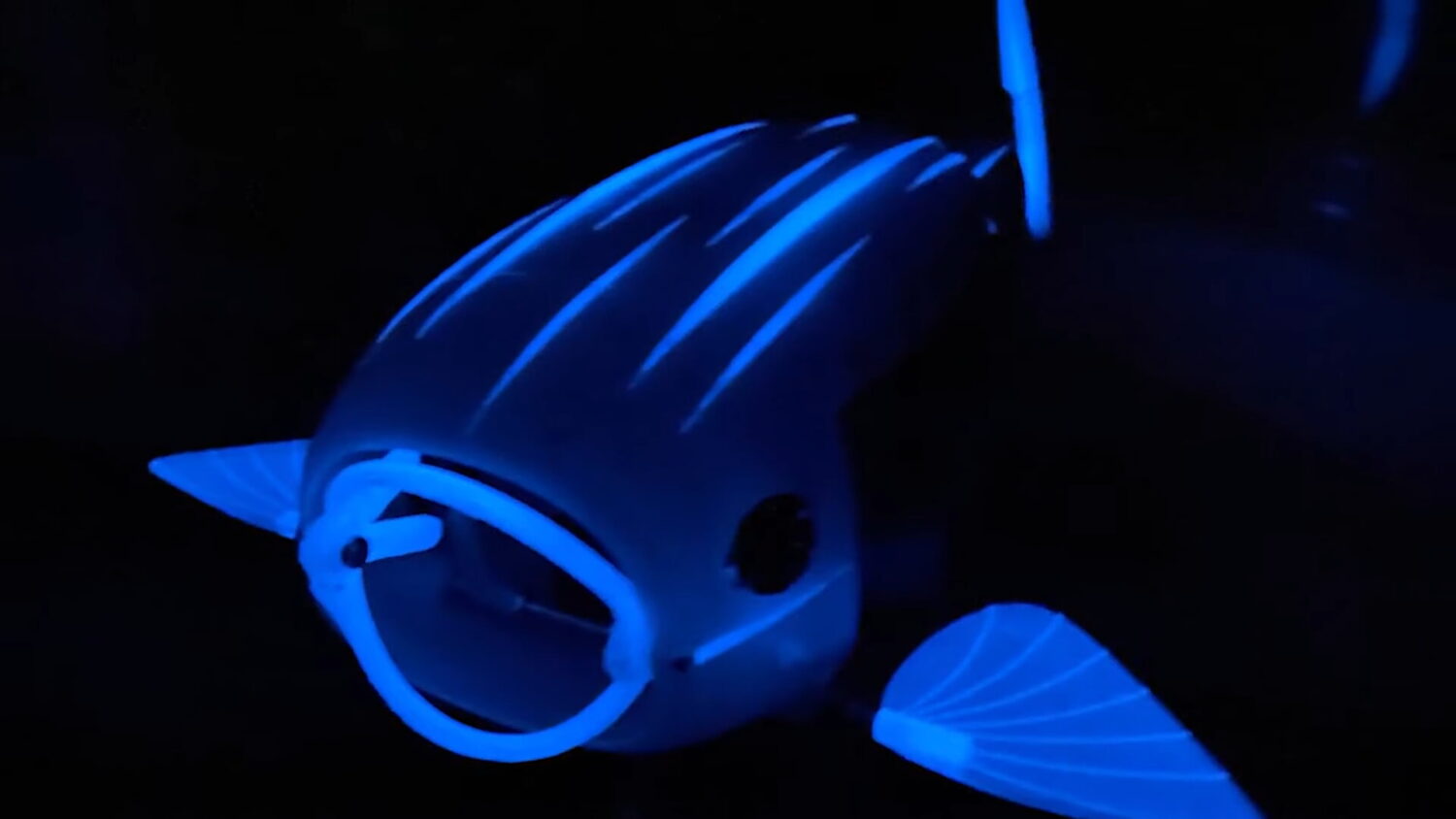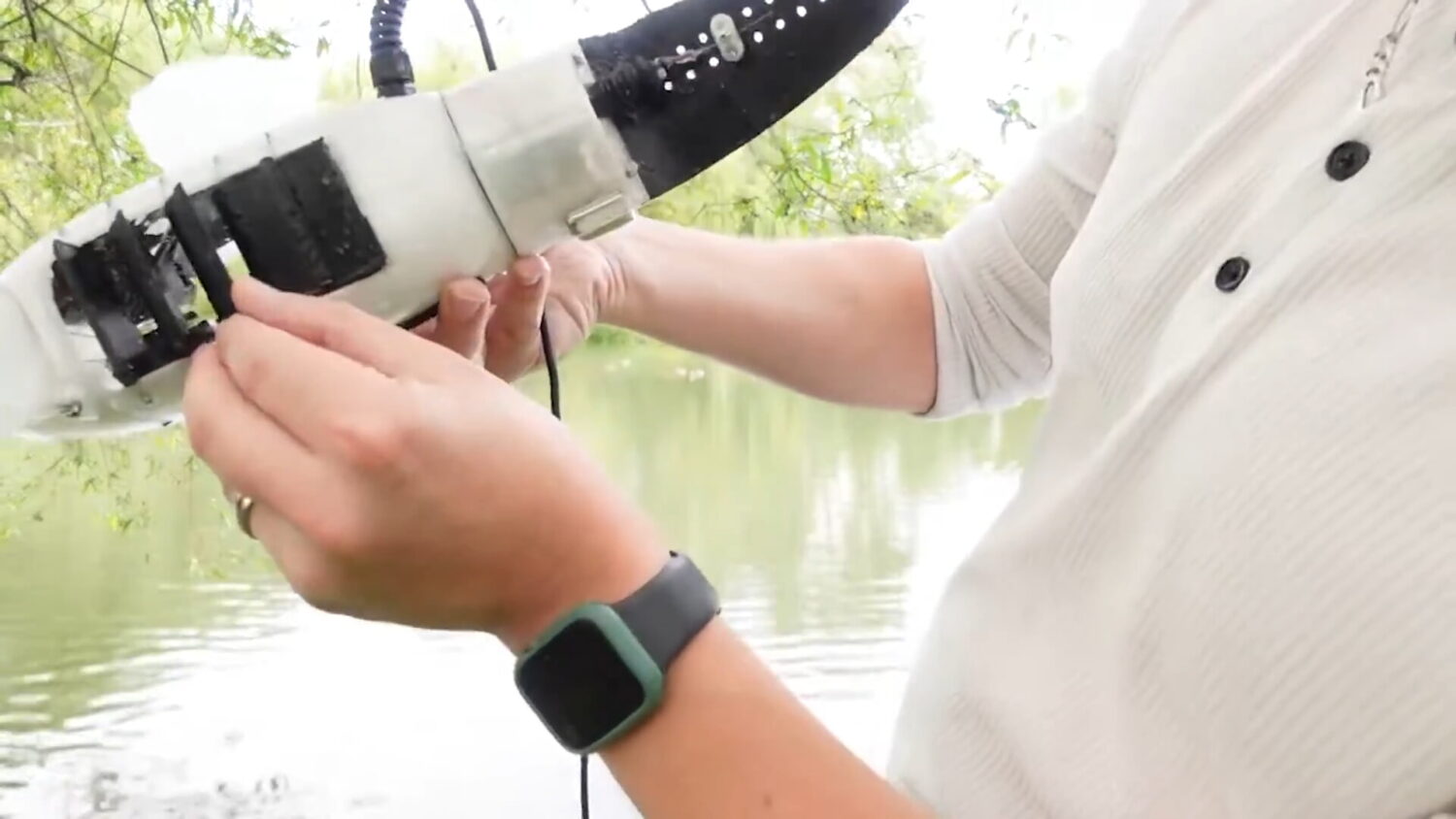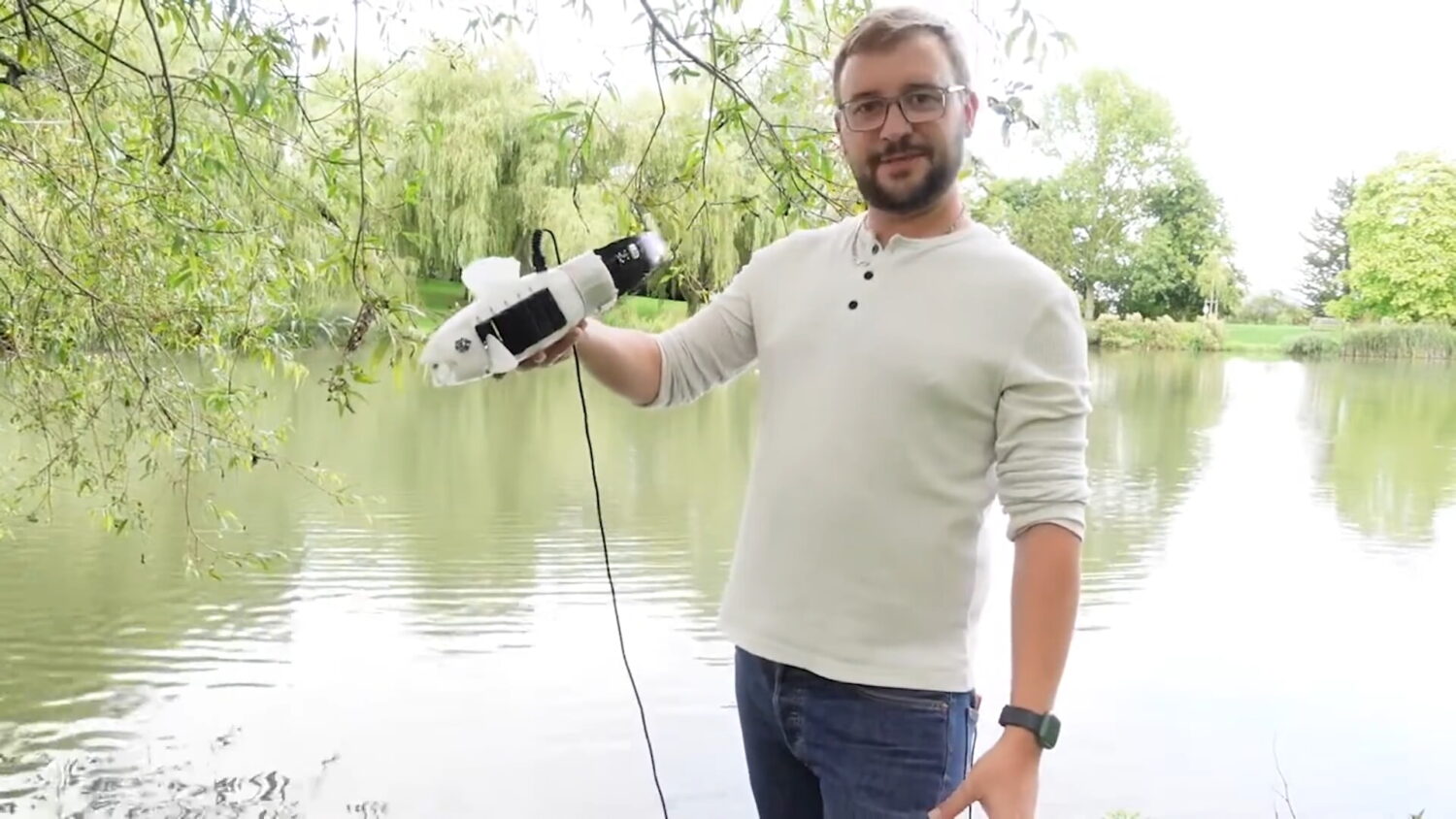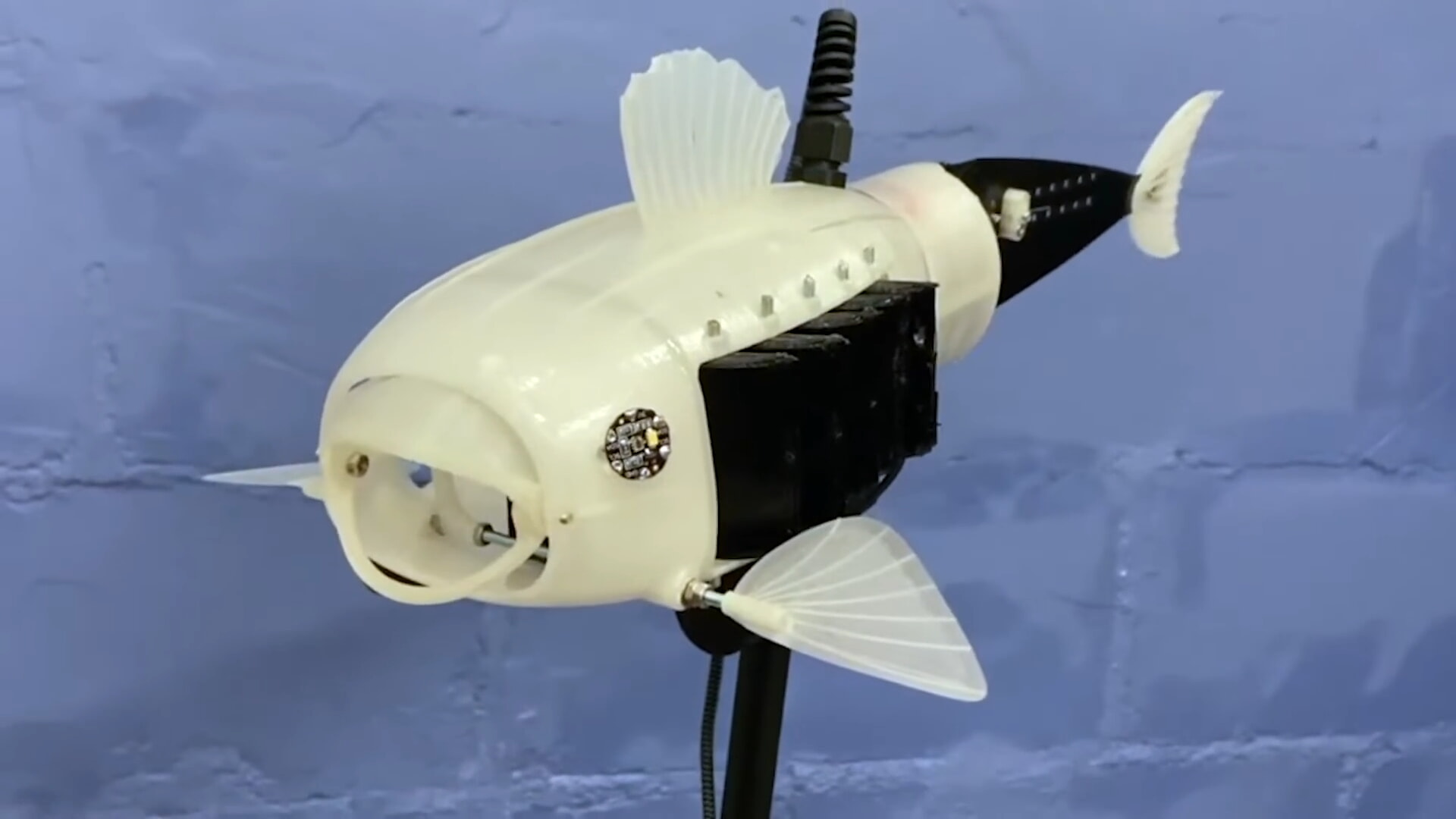The ocean has always been our provider and our reflection — it feeds us, fills our lungs with oxygen, and reminds us how small we are. But in recent decades, that reflection has grown murky. Plastic, once hailed as a miracle material, now poisons the very waters we depend on. It’s no longer just bottles and bags washing up on beaches. It’s microscopic fragments slipping through filters, drifting through every corner of the sea, and even finding their way into our own bodies.
Beach cleanups and recycling drives, while important, can’t keep pace with the problem. What we need are solutions that don’t just fight nature, but work with it. And that’s exactly where a team of UK researchers turned for inspiration. They created something extraordinary: a robotic fish that eats plastic, digests it for energy, and swims on without ever needing a battery.
This invention doesn’t just clean the ocean — it runs on the very pollution it’s designed to remove.
The Hidden Tide of Microplastics
The fight against plastic has shifted from big, obvious trash — bottles, bags, fishing nets — to something far more insidious: microplastics. These tiny fragments, smaller than a grain of rice, are everywhere. They float in the open sea, sink into the deep, get trapped in Arctic ice, and lodge themselves inside fish, shellfish, and eventually, us.
They come from the slow breakdown of packaging, the fibres shed from laundry, the dust off worn-down car tires, and even the soles of our shoes. And they don’t just clutter the water. They leach harmful chemicals like BPA and phthalates, which scientists link to hormone disruption, inflammation, and long-term health risks.
Fish that swallow microplastics often starve, tricked into feeling full. Those plastics then climb the food chain until they reach our plates. Researchers have already detected them in human blood, lungs, and even placentas.
The numbers are staggering. A 2023 study estimated more than 170 trillion plastic particles floating in our oceans — and the count is only growing. The heartbreaking truth is that while a turtle caught in plastic nets makes for a viral image, the real danger is the invisible tide of microplastics steadily infiltrating every ecosystem.

A Fish That Feeds on Pollution
Off the coast of southern England, a new kind of swimmer has taken to the water. It looks and moves like a fish, but it’s made of engineering genius. Built by researchers at the University of Surrey, this robotic fish glides with a flexible tail, silently hunting for its prey — microplastics.
Here’s the twist: it doesn’t run on batteries. Instead, it powers itself by digesting the very plastic it collects.
The design is both clever and symbolic. As it filters water, it traps microplastics, compresses them, and turns them into low-voltage electricity. That energy then fuels its systems, allowing it to swim patrols of up to 12 hours and collect over two kilograms of plastic at a time.
Made of soft, biodegradable materials, the robo-fish is safe for marine life. It avoids collisions, swims silently, and rises to the surface when its chamber is full. And the plan isn’t just one fish. Imagine fleets of these mechanical swimmers, moving in swarms, cleaning harbors and coastlines in ways human crews could never keep up with.
It’s a perfect example of biomimicry — learning from nature’s designs and adapting them to solve human problems.

A Global Wave of Ocean Robotics
The UK’s robo-fish is just one part of a global push to fight plastic with technology inspired by the sea itself.
In China, a team at Sichuan University built a fish no bigger than a paperclip. At just 13 millimeters long, this tiny swimmer uses a soft shell-like body to attract and trap microplastics using electrostatic forces. It runs on infrared light and can heal itself if damaged — restoring nearly 90% of its functionality.
Meanwhile, in South Korea, robotic fish are being tested in fish farms. The Ichthus V5.5, developed at Imperial College London, swims gently through aquaculture pens to monitor water quality and detect pollutants before they spread. Its design is so agile that it can turn in a space smaller than its own body length. And when it needs energy, it doesn’t wait for humans — it returns to a floating dock and recharges on its own.
Though different in design, these projects share a single idea: work with the rhythms of the ocean, not against them.

The Boundaries of Robotic Solutions
As exciting as these machines are, they’re still at the starting line. A single robo-fish can’t sweep an ocean. Even fleets will struggle against the sheer scale of the plastic tide. And while many of the designs are innovative, the sea is a brutal testing ground — corrosive salt, violent storms, shifting currents, and abrasive debris all threaten their survival.
Some models can self-heal. Others still need manual docking or batteries. None are yet truly limitless.
And perhaps the biggest limitation is this: they tackle the mess, not the cause. Without reducing the billions of plastic items we produce every year, robo-fish risk becoming a permanent crutch. As Professor Philip Demokritou warned, our mindset of “make the mess now, clean it up later” simply won’t hold for the planet — or the people who will inherit it.

